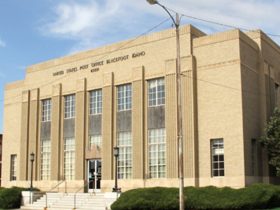Texas exhibits a stark dichotomy, featuring counties experiencing rapid growth and high population density alongside others characterized by sparse population and decline.
The most recent census data reveals that, among Texas’s 254 counties, 95 witnessed a decrease in population from 2020 to 2021. This article delves into the five counties that underwent the most pronounced population decline in terms of percentage change.
Loving County
Loving County, situated in the western part of the state near the New Mexico border, holds the distinction of being the least populated county in the United States, boasting just 51 residents as of July 1, 2021. Encompassing 677 square miles, it stands as one of the most sparsely populated regions globally.
In 2020, Loving County experienced the most significant percentage decrease in population among all Texas counties, dropping by 10.5% from 57 residents.
The county’s economic backbone is primarily reliant on oil and gas production, leading to fluctuations in population corresponding to industry activity. Notably, Loving County lacks incorporated towns, with its sole community being Mentone, serving as the county seat.
Read More: Exploring the 5 Counties in Wisconsin With the Most Rapid Population Decline
Winkler County
Winkler County, located in the western part of the state and adjacent to Loving County, has a population of 7,110 as of 2021, marking a 4.8% decrease from 2020 when it was 7,469. Encompassing an area of 841 square miles, Kermit serves as the county seat.
Similar to Loving County, Winkler County relies heavily on oil and gas production for its economy, leading to fluctuations in its population over the years. The county reached its peak population of 12,064 in 1960 but has since experienced a nearly 50% decline.
Read More: Exploring the 5 Counties in Arkansas With the Most Rapid Population Decline
Terrell County
Terrell County, situated in the southwestern region of the state and sharing a border with Mexico, had a population of 776 as of 2021, reflecting a 4.7% decrease from the 2020 figure of 814. Encompassing an area of 2,358 square miles, it ranks as the eighth-largest county in Texas in terms of land area.
Despite its vast expanse, Terrell County is notably sparsely populated, with a mere 0.3 individuals per square mile. The county’s singular town and county seat is Sanderson, boasting a population of 837 as of the 2010 census.
The local economy primarily revolves around ranching and tourism, anchored by attractions like the Big Bend Ranch State Park and the Rio Grande.
Read More: Exploring the 5 Most Dangerous Neighborhoods of Tamarac, Florida!
Lipscomb County
Lipscomb County, situated in the northeastern region of the state and bordering Oklahoma, recorded a population of 3,302 as of 2021, marking a 4.2% decrease from 3,446 in 2020.
Encompassing an area of 932 square miles, Lipscomb County’s administrative center is the town of Lipscomb. The local economy is predominantly reliant on agriculture, specifically the cultivation of wheat, corn, and cattle.
In addition to its agricultural activities, the county engages in oil and gas production and is a participant in the Texas Panhandle wind power corridor. Notably, Lipscomb County witnessed its peak population in 1930, reaching 10,669 residents, but has since experienced a decline of more than two-thirds.
Read More: Exploring the 5 Counties in Alabama With the Most Rapid Population Decline
Reagan County
Reagan County, situated in the central part of the state, derives its name from John H. Reagan, a former U.S. Senator and Postmaster General from Texas. As of 2021, the county has a population of 3,336, marking a 3.9% decrease from the 2020 figure of 3,472. Encompassing an area of 1,176 square miles, its county seat is Big Lake.
The county’s economic foundation primarily revolves around oil and gas production, being home to the initial oil well in the Permian Basin, drilled in 1923.
Notably, the county’s population reached its pinnacle at 4,756 in 1980 but has since experienced a decline of approximately 30%.
Read More: Exploring the 5 Counties in South Carolina With the Most Rapid Population Decline
Conclusion
All five of the Texas counties with the fastest rate of population reduction between 2020 and 2021 are rural places with heavily dependent economies on natural resources.
Aging populations, few services, and environmental concerns are just a few of the difficulties these counties face. They are nevertheless valuable to explore and preserve because of their distinct histories, cultures, and landscapes.












Leave a Reply